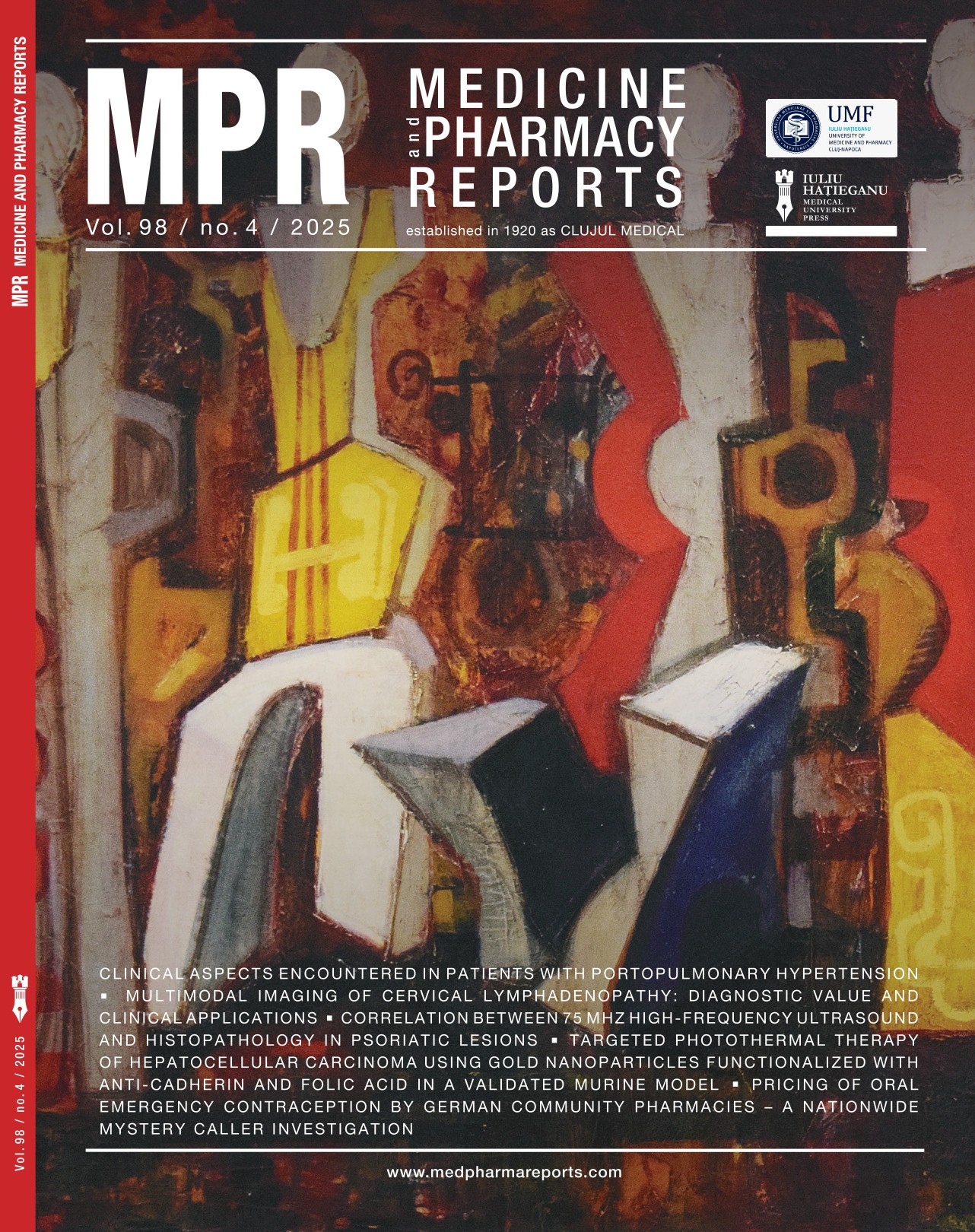Adrenal incidentalomas: clinical, biological, imaging and therapeutic features
DOI:
https://doi.org/10.15386/mpr-2862Keywords:
adrenal incidentalomas, computed tomography, pheochromocytoma, hypercortisolism, primary hyperaldosteronism, adrenalectomyAbstract
Background. Adrenal incidentaloma is an adrenal mass discovered incidentally during an imaging examination that was not conducted to investigate an adrenal pathology. Its etiologies are varied, which determines the choice of different therapeutic options. The objective of our study is to describe the clinical, biological, etiological, and therapeutic aspects of adrenal incidentalomas in our series.
Methods. This is a retrospective study including 55 patients who were managed for adrenal incidentalomas. Demographic characteristics, clinical evaluations, imaging features, and functional status were analyzed.
Results. The mean age was 55.49 ± 13.53 years with a female predominance (65.4%). The circumstances of discovery were predominantly digestive (54.5%). Computed tomography (CT) was the most frequent imaging method used in the first detection of adrenal incindentalomas. These adrenal masses were unilateral in 72.8% of patients, and bilateral in 27.2% of cases. Their sizes ranged from 10 to 135 mm. In terms of secretory profile, the etiologies of adrenal incidentalomas were predominantly non-functional, followed by pheochromocytomas, and
hypercortisolism, then primary hyperaldosteronism. Adrenalectomy was indicated for 23.6% of our patients.
Conclusion. Our results are in agreement with those in the literature, showing that patients with an incidental adrenal mass need a multidisciplinary approach involving clinical and biological screening for endocrine hypersecretion, as well as radiological evaluation to ensure an effective etiological diagnosis and to establish a personalized and optimal therapeutic management plan.
Downloads
Published
How to Cite
Issue
Section
License
Copyright (c) 2025 Medicine and Pharmacy Reports
The authors are required to transfer the copyright of the published paper to the journal. This is done by agreeing to sign the Copyright Assignment Form. Whenever the case, authors are also required to send permissions to reproduce material (such as illustrations) from the copyright holder.

The papers published in the journal are licensed under a Creative Commons Attribution-NonCommercial-NoDerivatives 4.0 International License.

